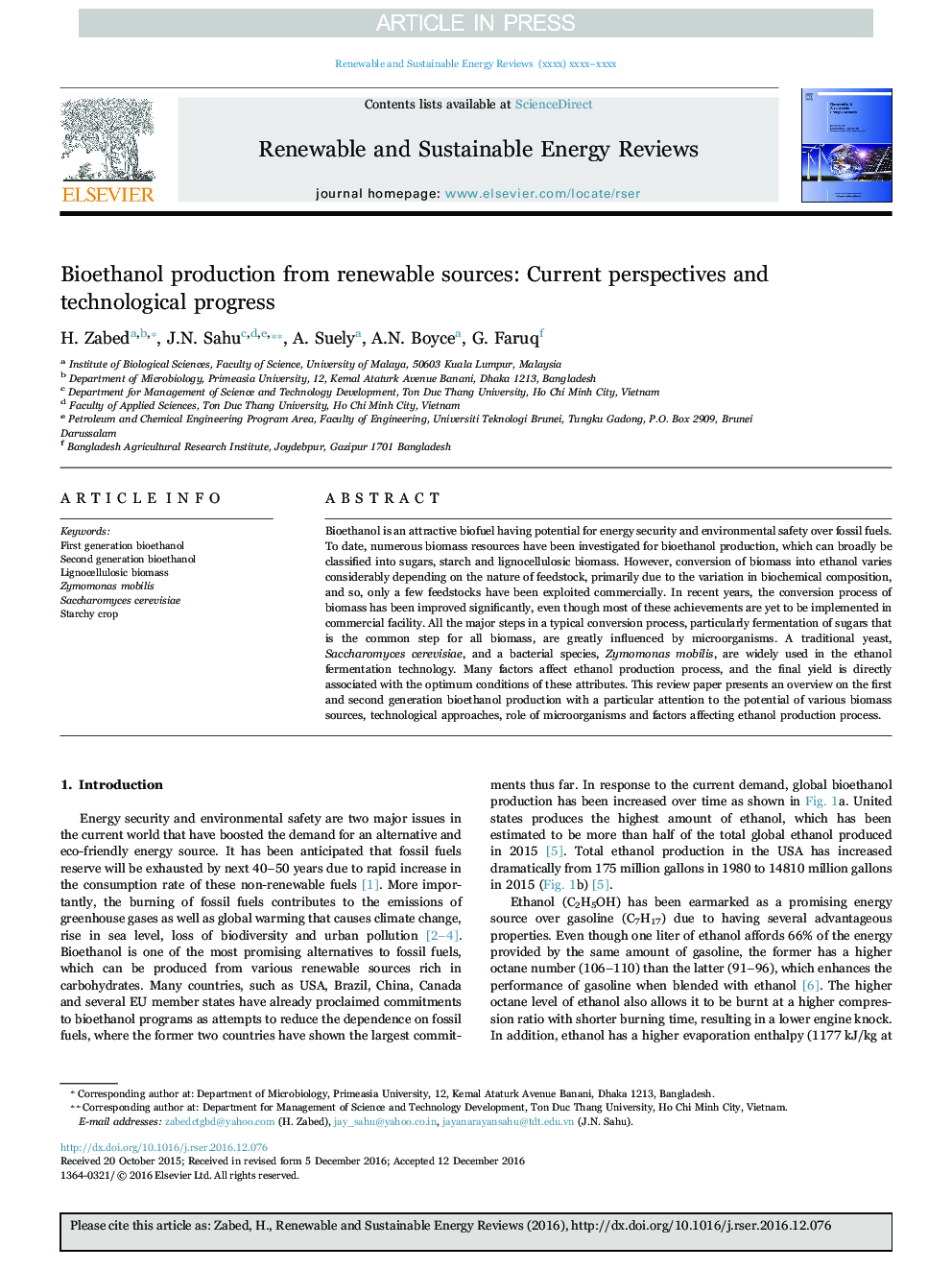| Article ID | Journal | Published Year | Pages | File Type |
|---|---|---|---|---|
| 5483057 | Renewable and Sustainable Energy Reviews | 2017 | 27 Pages |
Abstract
Bioethanol is an attractive biofuel having potential for energy security and environmental safety over fossil fuels. To date, numerous biomass resources have been investigated for bioethanol production, which can broadly be classified into sugars, starch and lignocellulosic biomass. However, conversion of biomass into ethanol varies considerably depending on the nature of feedstock, primarily due to the variation in biochemical composition, and so, only a few feedstocks have been exploited commercially. In recent years, the conversion process of biomass has been improved significantly, even though most of these achievements are yet to be implemented in commercial facility. All the major steps in a typical conversion process, particularly fermentation of sugars that is the common step for all biomass, are greatly influenced by microorganisms. A traditional yeast, Saccharomyces cerevisiae, and a bacterial species, Zymomonas mobilis, are widely used in the ethanol fermentation technology. Many factors affect ethanol production process, and the final yield is directly associated with the optimum conditions of these attributes. This review paper presents an overview on the first and second generation bioethanol production with a particular attention to the potential of various biomass sources, technological approaches, role of microorganisms and factors affecting ethanol production process.
Keywords
Related Topics
Physical Sciences and Engineering
Energy
Renewable Energy, Sustainability and the Environment
Authors
H. Zabed, J.N. Sahu, A. Suely, A.N. Boyce, G. Faruq,
